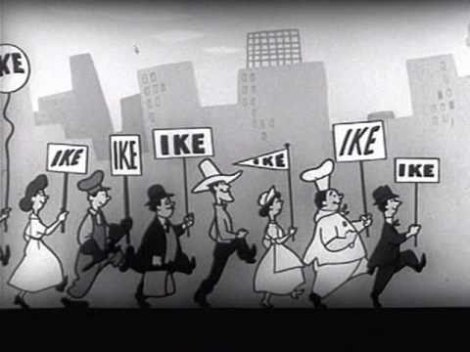Thanks to archives and thelivingroomcandidate.org, I have watched TV ads used in presidential campaigns from 1952 through 2012. This post is the first part of a series of posts I have written about the way the advertisements have changed through history. I have been most intrigued by the tv spots that changed the way presidential campaigns were conducted forever.
In 1952, Dwight Eisenhower’s catchy “I like Ike” jingle was the first televised advertisement for a presidential campaign. Over the last 61 years television advertisements have played an increasingly vital role in the campaign for presidency. Along with an increase in importance, there has been an increase in spending for airtime to reach the public eye. Television has proven to be the ideal medium for communicating with the masses in the last 16 elections. Presidential campaign ads have evolved with popular culture and trends in the media. The easiest way to understand the role that television advertising has played in presidential campaigns is to start with Ike and watch ads through the Obama administration. This is a time consuming process that can be shortened by focusing on the most influential advertisements. I have compiled my knowledge and research to explain the changes in types of advertisements throughout history and the importance of television advertising in presidential campaigns.
In 1952 television was not the mass medium that we know it as today. The mass spread of televisions happened in later elections. The transition from radio to television programming was not complete. This can be seen by the strong use of jingles in the first presidential campaign advertisements. Dwight Eisenhower’s campaign released “Ike for President.” In this advertisement animated people hold signs for Ike and an upbeat jingle is played. Adlai Stevenson’s campaign released an advertisement that featured a woman singing “I love the gov” in the popular music style of the time. The television advertisements in 1952 focused on promoting the candidate and did not say anything about the opponent. This style is almost laughable in comparison to modern campaigns. The “Eisenhower answers America” advertisement is another to note from this year. This ad attempts to make a direct connection with the public by showing citizens asking questions and then Eisenhower answering them. The questions were filmed at a time separate from when Ike filmed the answers and is the first noted deceptive editing to be used in a campaign TV advertisement.
